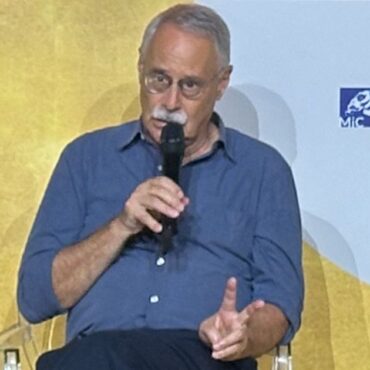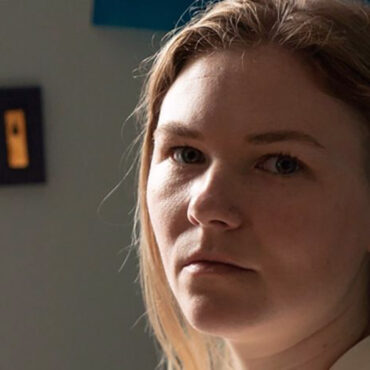Mika Gustafson: A fresh voice in contemporary cinema
In the realm of contemporary cinema, some voices emerge as fresh, powerful, and utterly unique. One such voice is that of Mika Gustafson, the director of “Paradise is Burning,”, in section Orizzonti, a film that challenges conventions and explores the delicate balance between freedom and despair. I had the privilege of sitting down with Gustafson to delve deeper into her creative process and the intricate layers of her debut feature film.
Siblinghood and summer: Exploring ‘Paradise is Burning’
“Paradise is Burning” takes us on a journey through the lives of three sisters, Laura, Mira, and Steffi, who find themselves navigating the complexities of life in the absence of their mother. Set against the backdrop of a working-class suburb during summertime, the film offers a glimpse into a world where joy and freedom coexist with moments of profound loneliness. It’s a story that resonates with anyone who has experienced the unique bond of siblinghood.
Raw emotion on screen: Non-professional actors in ‘Paradise is Burning’
One of the most striking aspects of the film is Gustafson’s choice to work with non-professional actors, including the talented Bianca Delbravo, Dilvin Asaad, and Safira Mossberg in the title roles. This decision brings an authentic and raw quality to the performances, allowing the audience to connect with the characters on a deeper level. Gustafson’s background in working with non-professional child actors shines through in her ability to capture their genuine emotions and inner lives.
Creating magic on set: Mika Gustafson’s directorial approach
When asked about her approach to directing, Gustafson emphasized the importance of creating a safe and collaborative environment on set. She believes that filmmaking is about fostering moments of true magic, where actors feel free to explore their characters and emotions. Her dedication to the well-being of her cast is evident in the film’s powerful performances.
The visual style of “Paradise is Burning” is another noteworthy element. Shot in a 4:3 aspect ratio with a patinated and gentle cinematography, the film creates a sense of nostalgia that tugs at the heartstrings. Gustafson’s vision for the film was clear from the beginning – she aimed to craft a cinematic experience that was poetic, playful, and punk all at once. This unique blend of styles serves as a testament to her artistic vision and ability to push boundaries.
As we delved further into Gustafson’s journey, it became evident that her background played a significant role in shaping her artistic approach. A graduate of Gothenburg’s Valand Academy, she brings a philosophical and analytical perspective to her work, coupled with a dedication to her craft that mirrors the discipline of elite sports. This combination of influences has allowed her to create films that challenge perceptions and offer audiences something truly unique.
Mika Gustafson’s Artistic Dedication
Gustafson’s feature debut has not been without its challenges, but she thrives on the complexity of storytelling. Her ability to tackle intricate scripts and transform them into cinematic gems is a testament to her talent and dedication. When asked about what’s next for her, Gustafson hinted at another collaboration with Alexander Öhrstrand, promising more thought-provoking and boundary-pushing cinema in the future.
In conclusion, Mika Gustafson’s “Paradise is Burning” is a testament to the power of cinema to capture the essence of human experience. Her unique approach to storytelling, dedication to her cast, and bold artistic vision make her a rising star in the world of cinema. As we eagerly await her future projects, one thing is certain – Gustafson’s voice will continue to resonate and challenge the boundaries of storytelling in film.
Plot
In a working-class area of Sweden, sisters Laura (16), Mira (12), and Steffi (7), get by on their own, left to their own devices by an absent mother. With summer on the way and no parents around, life is wild and carefree, vivacious and anarchic. But when social services call a meeting, Laura has to find someone to impersonate their mom, or the girls will be taken into foster care and separated. Laura keeps the threat a secret, so as not to worry her younger sisters. But as the moment of truth draws closer, new tensions arise, forcing the three sisters to negotiate the fine line between the euphoria of total freedom and the harsh realities of growing up.






































